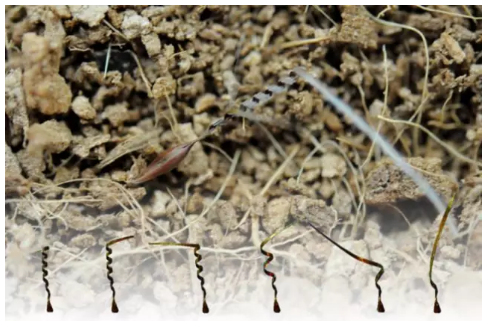A team of researchers in South Korea was finally able to deconstruct “ingenious mobility strategies” of seeds that are capable of burrowing themselves into soil rotationally. It is one of the best examples of one of the many ways of biological geometry that are used by nature to offer plant with strong muscular capabilities. The research was led by professor Ho-Young Kim who works at the Seoul National University located in Korea, he started the project by bringing together all his colleagues for beginning a project that took roots after working of plants.
Seeds move smartly to dig themselves into the soil with the help of coiled appendages, called an awn, that swiftly responds to humidity. The team deeply investigated the burrowing of this awn and studied the process of how nubile sprouts iterate the process of burying themselves. These findings were recently published in a journal and it is believed that it may have dramatic implications for the improvement of agricultural robotics.

Wonjong Jung, one of the previous students of Kim and now a senior researcher in Korea at the Samsung Advanced Institute of Technology, adds, “It was a surprise to us that the plant can produce effective motions without muscles. We immediately investigated plant species with self-burrowing seeds and identified plant species using similar digging strategies. Although the seeds of some plants such as wild wheat have simple curved awns that exhibit only bending motions, the seeds of other plants with helical awns can generate rotary motions for digging. We thought that it was highly probable that the seeds spin themselves to facilitate digging.” They also studied a few species from flowering plants like Pelargonium which is a helically coiled awn that can respond to humidity showcasing hygroscopic expansion. Under humid conditions, this awn can deform into a straight line. If you anchor this seed, the reaction will formulate a thrust against soil as the coil that is being unwinded will rotationally dig and bury the seed. W
Wonjung Kim, a professor at the Sogang University adds, “Our work illuminates the surprising functionality and beauty of natural design. Although plants cannot generally produce active motions due to their lack of muscle, some seeds have evolved to create burrowing toward a better germination environment. More surprisingly, when a helical shape awn is exploited, the burial strategy is remarkably good for drag reduction.”
Filed Under: News


Questions related to this article?
👉Ask and discuss on Electro-Tech-Online.com and EDAboard.com forums.
Tell Us What You Think!!
You must be logged in to post a comment.